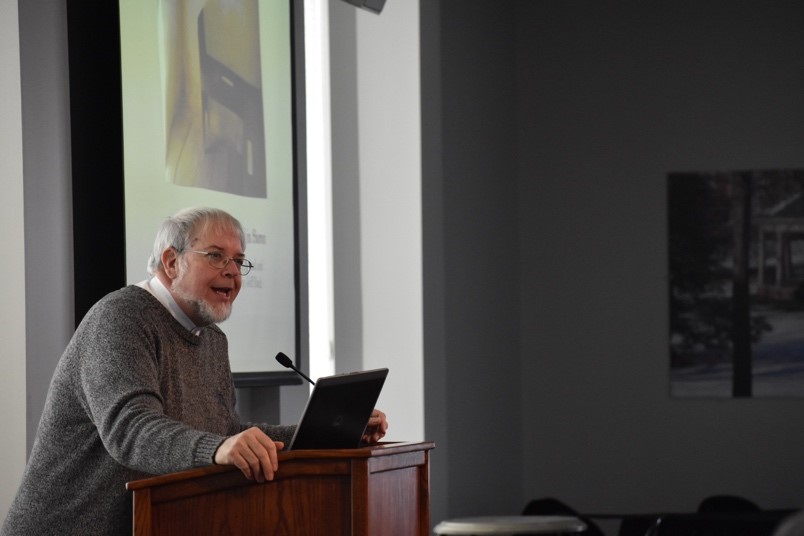Despite the mid-semester chaos on Elizabethtown College campus, the audience within The Susquehanna Room was full to view the cultural presentation, “Mystics in the Wilderness: Ephrata, Art, and Music,” recently presented by Professor Jeff Bach.
Bach is an instructor within the Religious Studies Department and is the Director of the Young Center for Anabaptist and Pietist studies. As an ordained minister of the church of the Brethren, questions asked at the lecture’s conclusion were answered with delicate precision, but not weighted with complex terminology. Bach spoke on the historic community of the Ephrata Cloister, describing its unique religious views, calligraphy is known as “Fraktur” and the immensely large variety of worship hymns that they composed.
The Presidential Community Enrichment Series group, developed under the initiative by College President Carl Strikwerda, made up the majority of those in attendance of Bach’s lecture. The attendees come from the surrounding retirement homes and villages, as well as retirees within the community. Members of the community group are presented with topics currently being discussed by E-Town faculty and then express their interest on which they’d like to attend.
“Professor Bach was selected because he met the criteria of our search and selection process,” explained Caroline Lalvani, director of Community Relations and College Events.
As the lecture advanced, Bach presented an explanatory powerpoint with specified dates and photographs for the audience.
Ephrata was born in the mid-1700s along the Cocalico Creek under the leadership of Conrad Beissel. Consisting of orders of celibate men, celibate women, and married families, the Ephrata community was a movement that separated from the Brethren who began in Germany in 1708. The community printed the largest book produced in colonial America, the Martyrs Mirror, a collection of stories of Anabaptist martyrs and other Christian martyrs.
“It’s a bit ironic to discuss the community of Ephrata’s views on religious celibacy the day before Valentine’s Day,” Bach admitted, chuckling, “but the view of having a relationship with God was much more important than having a relationship with a partner.”
Bach continued his explanation of Ephrata’s history through works of the arts. “Der Blutige Schauplatz Older Martyer Spiegel” was translated into German and printed by the Ephrata Cloister in 1748. At this time period, it was the largest book in the American colonies with over 1,200 pages.
To conclude his lecture, Bach explained to listeners that Ephrata was now owned by the state and hadn’t encompassed any religious congregations since the 1940s.
Student reaction to Bach’s presentation was positive, acknowledging appreciation of having the opportunity to broaden cultural horizons within their studies.
Addy Fry is a junior Professional Writing major with a Graphic Design Minor. She writes and takes photos for the Etownian, is the student representative for Alpha Lambda Delta NHS (Class of 2020), and is a member of the college campus Democrats. She plans to enter the field of political science after graduation and enjoys listening to music in her free time.

